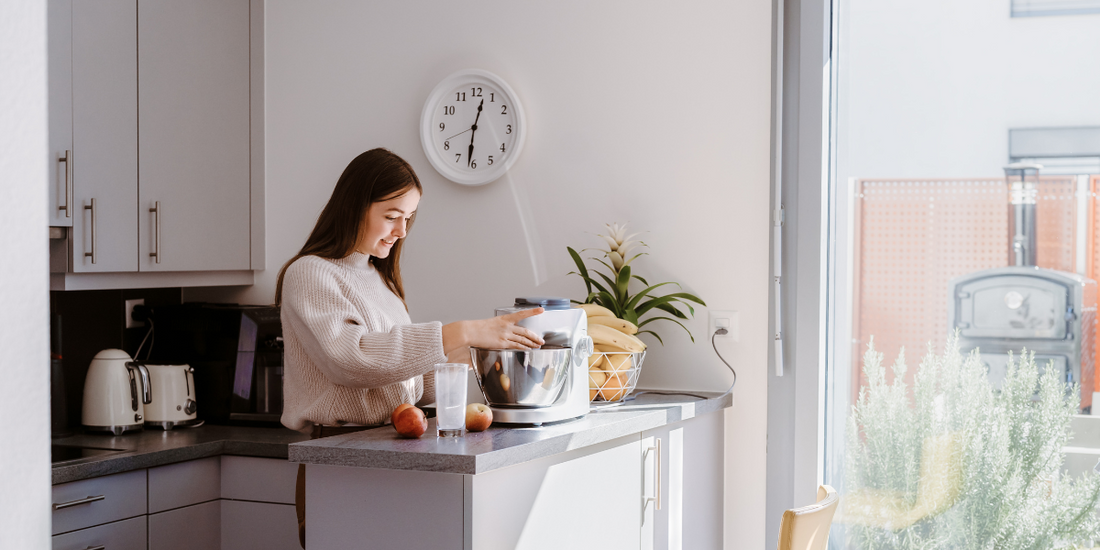In the realm of kitchen appliances, blenders and food processors are two essential tools that offer convenience and versatility. While they share some similarities, there are distinct differences between these appliances. In this article, we will explore the dissimilarities between blenders and food processors to help you understand their unique functions and choose the right tool for your culinary needs.
Purpose and Function
Blender: A blender is primarily designed for blending, pureeing, and liquefying ingredients. It excels at creating smooth textures, making it ideal for preparing smoothies, soups, sauces, and beverages. The blades of a blender are specifically designed to create a vortex that pulls ingredients downwards, ensuring thorough blending and homogeneity.
Food Processor: A food processor, on the other hand, is a versatile kitchen appliance that can perform various tasks such as chopping, slicing, shredding, and grating. It is capable of handling a wider range of food preparation techniques. With interchangeable blades and discs, a food processor can adapt to different cutting and processing requirements.
Blade Design
Blender: The blades of a blender are typically positioned at the bottom of the blender jar. They are sharp and designed to create a whirlpool effect, pulling the ingredients towards the blades for efficient blending. The blade design is optimized for liquefying and achieving smooth textures.
Food Processor: Food processors have a set of interchangeable blades and discs that attach to a central spindle. These blades and discs are designed for specific tasks like slicing, chopping, grating, or shredding. The blade and disc attachments enable precise cutting and processing of ingredients with varying textures.
Capacity and Volume
Blender: Blenders generally have a larger capacity compared to food processors. They are designed to accommodate larger quantities of liquid-based ingredients, making them suitable for preparing smoothies, soups, and beverages for multiple servings.
Food Processor: Food processors often have a smaller capacity than blenders. They are more suitable for processing solid ingredients in smaller batches. The smaller capacity allows for better control and precision when chopping, slicing, or shredding various food items.
Texture and Consistency
Blender: Blenders are ideal for creating smooth and uniform textures. The powerful motors and vortex-like blade action ensure that ingredients are thoroughly blended, resulting in silky smooth sauces, purees, and beverages. Blenders are particularly effective in breaking down fibrous ingredients like fruits and vegetables.
Food Processor: Food processors excel at achieving different textures based on the blade or disc attachment used. Whether you need finely chopped vegetables, coarse breadcrumbs, or grated cheese, a food processor can provide the desired consistency. The pulsing action of a food processor allows for more control over the final texture of the processed ingredients.
Versatility
Blender: While blenders have limited functionalities compared to food processors, they are incredibly versatile within their domain. They are ideal for creating a wide range of blended recipes, including smoothies, shakes, purees, and even creamy soups. Some high-powered blenders can also handle tougher tasks like crushing ice or grinding nuts.
Food Processor: Food processors are known for their versatility in the kitchen. With interchangeable blades and discs, they can tackle various food preparation tasks. From chopping vegetables and kneading dough to slicing fruits and grating cheese, a food processor can streamline your cooking process and save valuable time.
Control and Precision
Blender: Blenders are generally less precise than food processors when it comes to controlling the texture and size of the processed ingredients. However, they are designed to achieve consistent results in blending and pureeing, delivering smooth and well-incorporated mixtures.
Food Processor: Food processors offer greater control and precision in food preparation. With adjustable slicing discs and variable speed settings, you can customize the size and texture of the processed ingredients. This level of control is particularly useful when you need specific thickness for sliced vegetables or want to achieve a coarse or fine texture for chopped or grated ingredients.
Recommended Uses
Blender: Blenders are best suited for liquid-based recipes and recipes that require a smooth and homogeneous texture. They are perfect for making smoothies, milkshakes, purees, sauces, and emulsions. Blenders are also great for crushing ice and blending frozen fruits.
Food Processor: Food processors shine in tasks that involve solid ingredients and require precise cutting, slicing, shredding, or grating. They are excellent for chopping vegetables, making pie dough, grinding nuts, shredding cheese, and preparing dips and spreads like hummus or pesto.
Cleaning and Maintenance
Blender: Cleaning a blender is generally straightforward. Most blender jars and blades are dishwasher safe, making the cleaning process quick and convenient. Alternatively, you can easily clean them by adding warm water and a drop of dish soap to the blender jar and running it for a few seconds.
Food Processor: Food processors have more components and attachments, which may require some disassembly for cleaning. The blades, discs, and bowls should be disassembled and washed separately. Most parts are dishwasher safe, but it's recommended to check the manufacturer's instructions for specific cleaning guidelines.
Conclusion
While blenders and food processors may seem similar at first glance, they serve different purposes in the kitchen. Blenders excel at blending, pureeing, and creating smooth textures, making them perfect for recipes that involve liquids and require a silky consistency. On the other hand, food processors offer versatility in cutting, slicing, shredding, and grating, making them essential for precise food preparation and handling solid ingredients.
Understanding the distinctions between blenders and food processors will help you determine which appliance is better suited for your specific needs. Consider the type of recipes you frequently prepare, the textures you desire, and the level of control you require in your food preparation process. Ultimately, having both a blender and a food processor in your kitchen arsenal can provide you with a wider range of capabilities and enhance your culinary experiences.

